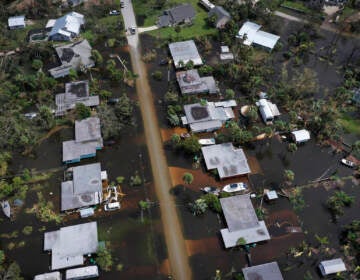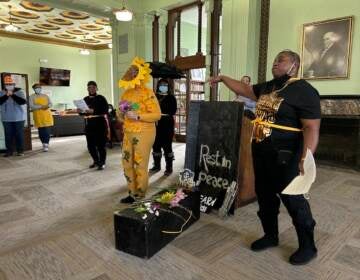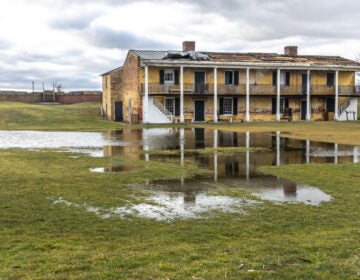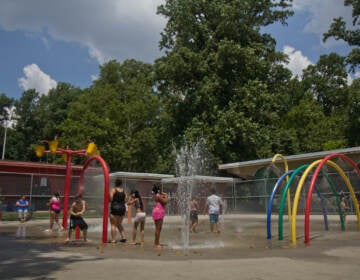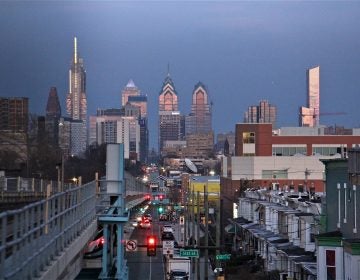Warm forecast could bring early spring blooms to Philly area, experts say
“It looks like things are trending … a good solid two weeks early,” one expert said.
Listen 1:07
Witch hazel blooming in January at the Morris Arboretum. (Courtesy of the Morris Arboretum)
Despite last weekend’s cold snap, winter-blooming plants are flowering earlier than usual in and around Philadelphia, according to some horticulturists.
“It certainly seems like things have been accelerated,” said Anthony Aiello, associate director of collections at Longwood Gardens. “If we had snow on the ground, these things might start to flower and then be covered with snow, but now it’s been so open and we’ve had these sort of mild days, a lot of these things are in full flower.”
Aiello said he’s seen plants including witch hazel, winter aconites, and snowdrops blooming two to three weeks earlier than usual at Longwood Gardens in Kennett Square. Winter hazel, winter jasmine, crocuses, hellebores and some daffodils are also blooming early at Morris Arboretum in northwest Philadelphia, said executive director Bill Cullina.
Bloom times are tied to temperature, Cullina said.
“[Winter-blooming plants] need a certain amount of cold temperatures in the fall and early winter to satisfy their dormancy,” he said. “Then when the average temperature gets above a certain point, the ground is unfrozen … they just come back into growth.”
Many of these flowers have bright colors and nice smells, Cullina said, and are a treat to see in the winter.
“Not only are we kind of color-deprived this time of year, but I think we’re also scent-deprived,” he said. “Seeing and smelling those things really just lifts my spirits.”
Last month was Philly’s warmest January in 91 years.
Philly’s winters are warming due to climate change. The city’s average winter temperature has risen roughly 5 degrees Fahrenheit since 1970, according to Climate Central.
Andrew Bunting, vice president of horticulture at the Pennsylvania Horticultural Society, said he’s watched plant bloom times shift earlier in the roughly four decades he’s lived in the Philly area. Bunting does not see this year’s winter flowers as earlier than “usual,” but rather in line with trends in recent years.
“These things are kind of already programmed, at least from the last 20 years, to bloom earlier,” he said.
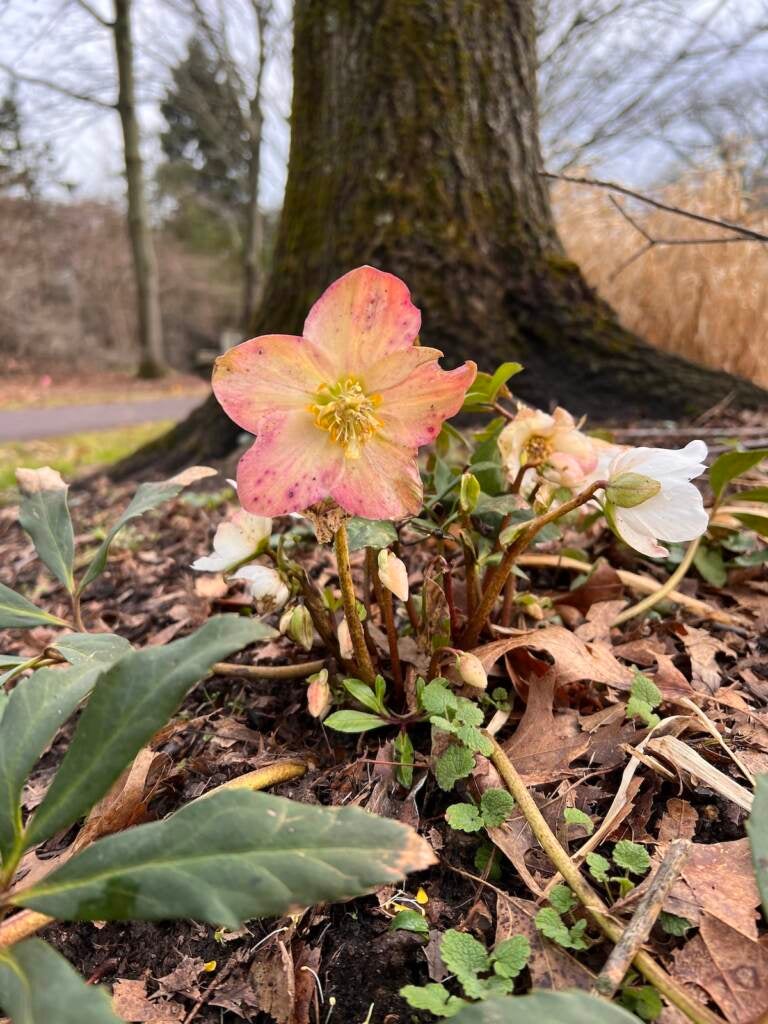
Winter-blooming plants were chill with the recent cold snap
Last weekend’s sub-freezing temperatures likely did not damage plants that have already started blooming or are gearing up to bloom.
“A lot of those plants have the genetics and are engineered to withstand some fairly tumultuous winter weather,” Bunting said. “I think almost everything I’ve seen will be fine.”
Witch hazel, for example, has a defense mechanism to protect its stringy yellow and red flowers.
“What happens when it gets cold is those petals actually coil up or curl up and kind of nestle themselves into buds,” Bunting said. “Then as it warms up, … get a little bit of sunshine, they kind of unfurl.”
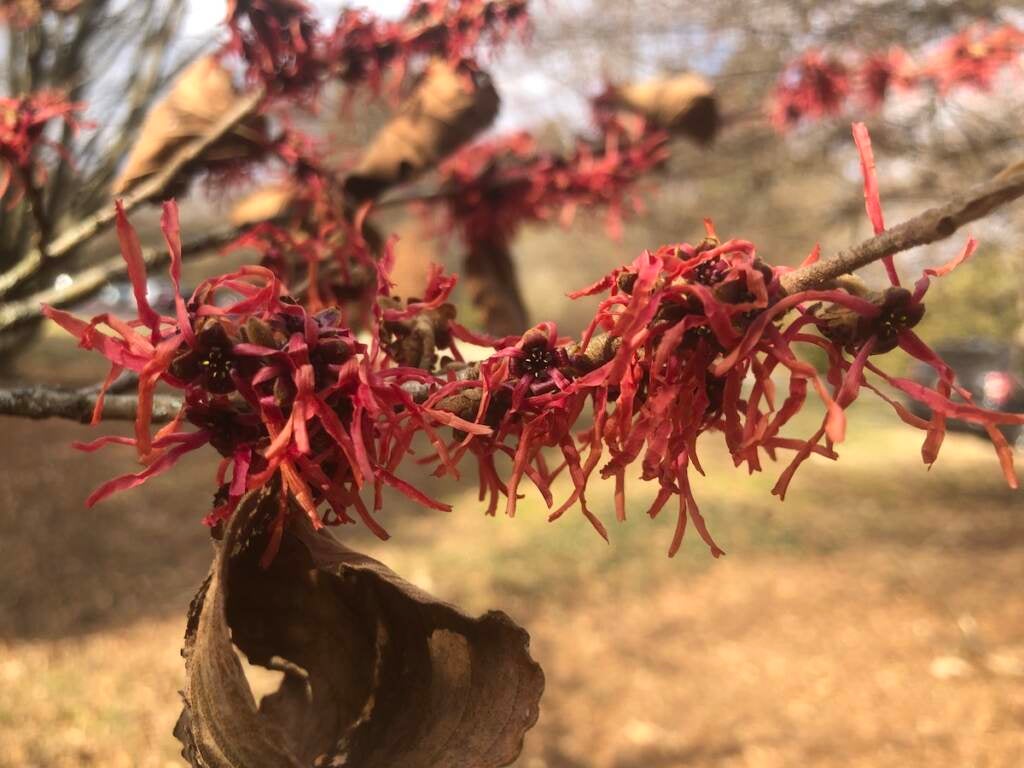
Winter-blooming plants produce a sort of “antifreeze” that protects them from damaging ice crystals, Cullina said. In exchange for braving cold snaps, plants that bloom in winter get access to pollinators with almost no competition.
“They’re kind of the only game in town,” Cullina said. “It’s like there’s only one restaurant open on Monday — everybody is going to go there.”
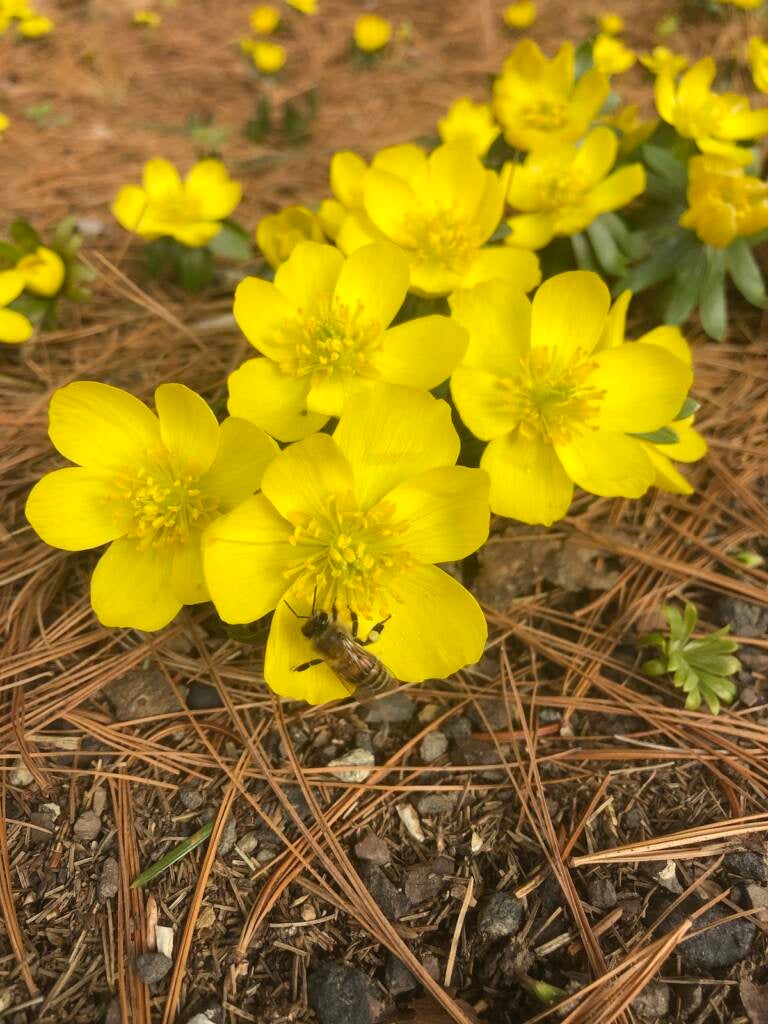
More worrisome than an early February cold snap, Aiello said, would be a late freeze, after the more delicate spring flowers have started to bloom.
“I think we’ve sort of survived … Friday night and Saturday morning, at least for this round,” Aiello said. “It sort of remains to be seen what happens over the next couple of weeks.”
Now that the cold snap is done, let's see what the rest of early February is going to bring. Yup, hit the resume button - faux-winter continues. pic.twitter.com/C7PRu058sf
— NWS Mount Holly (@NWS_MountHolly) February 5, 2023
Warm weather could mean more early blooms
Punxsutawney Phil predicted six more weeks of winter, but Bunting and Cullina agree they expect the first spring blooms sooner.
“It’ll feel like spring less than six weeks from now,” Bunting said. “That’s my prediction.”
Some of the next plants to bloom will be early varieties of cherry trees and magnolias, Cullina said. Others coming soon include more snowdrops, crocuses, fragrant viburnums, camellias, and Korean rhododendrons, Aiello said.
All it could take is a few warm days to set them off. The National Weather Service is predicting “almost spring-time weather” and above-normal temperatures across the Eastern U.S. this week.
“If it really warms up, we get like a week where we get temperatures in the sixties and seventies, that’s when it’ll bring on that next set of plants,” Cullina said.
Bunting is already seeing Okame cherry trees near his home in Swarthmore with swelling buds and a pink cast, as well as magnolia trees looking almost ready to flower.
Based on this month’s forecast, Aiello predicts plants will continue to bloom early.
“It looks like things are trending where they’re going to be a good solid two weeks early regardless of whatever it is,” he said.

Subscribe to PlanPhilly
WHYY is your source for fact-based, in-depth journalism and information. As a nonprofit organization, we rely on financial support from readers like you. Please give today.




